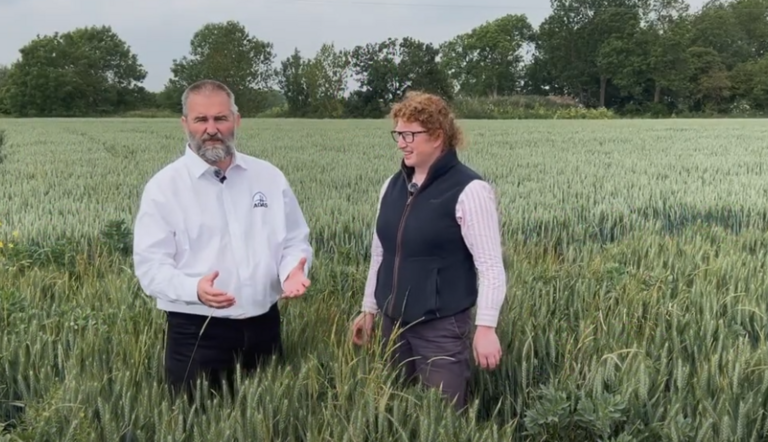
ADAS Boxworth Trial Series with John Cussans

In a trial being carried out by ADAS at its Boxworth site in Cambridgeshire, ADAMA is studying the effect of drilling date, seed rate and herbicide stack options on the effectiveness of weed control in cereals.
This year’s trial is an extension of similar work carried out in 2024. In this series of short videos, ADAMA’s herbicides specialist, Holly Pratt, discusses some of the trials aims and findings with John Cussans, ADAS Weed Science Principal Consultant.
TRIAL OVERVIEW
Holly and John discuss the aims of the trial including the role of residual herbicides in grassweed control and how herbicide stacks can potentially have an impact on crop vigour.
REDUCED SEED RATE
An overview of the effect of a reduced seed rate on grassweed control, and how an extended stack of herbicides helps crops to outcompete weeds.
HIGHER SEED RATE
As seeding rate increases from 75 seeds/m2 to 600 seeds/m2 so too does the level of grassweed control achieved.
DELAYED DRILLING
A look at how delaying the drilling date reduces grassweed pressure, and how the combined effects of drilling date, seed rate and herbicide stack work together to reduce the number of viable blackgrass plants.
THE ROLE OF CHLOROTOLURON (CTU)
Holly and John discuss the importance of using a sequence of herbicides such as pendimethalin and diflufenican to control grassweeds, plus the role of ADAMA’s unique active ingredient, chlorotoluron (CTU), to provide a broader spectrum of weed control.
TRIAL FINDINGS IN YEAR TWO
After two contrasting seasons, John outlines the findings of the trial in terms of the importance of using cultural controls alongside a suitable stack of herbicides to control grassweeds.
BACK-TO-BASICS ADVICE
John Cussans provides some back-to-basics grassweed control advice and discusses why it is important to use an appropriate level of herbicide inputs.
THIN CROPS IN LATE DRILLED PLOTS
Having looked at some of the trial’s later drilled crops which also received a lower seeding rate and a high dose of herbicides in a single application, John explains the importance of getting the right balance of cultural controls and applying herbicides in sequence.
RYEGRASS CONTROL ADVICE
An overview of how the trial’s blackgrass findings are also relevant to the control of ryegrass in spring and autumn established crops.
Latest Articles

A look at the next generation of cereal disease control - ADAMA In Action 2025
